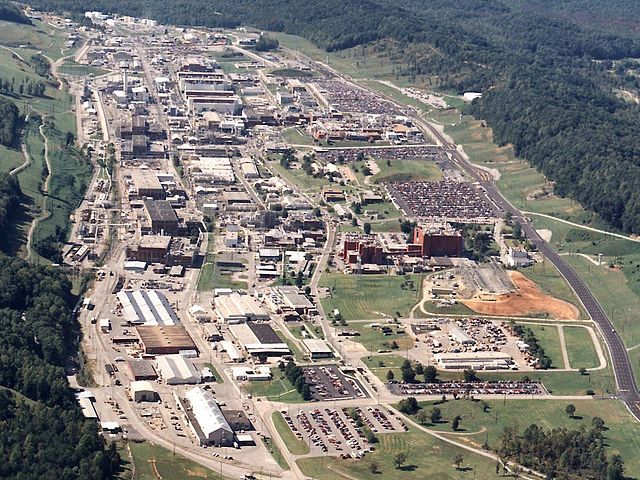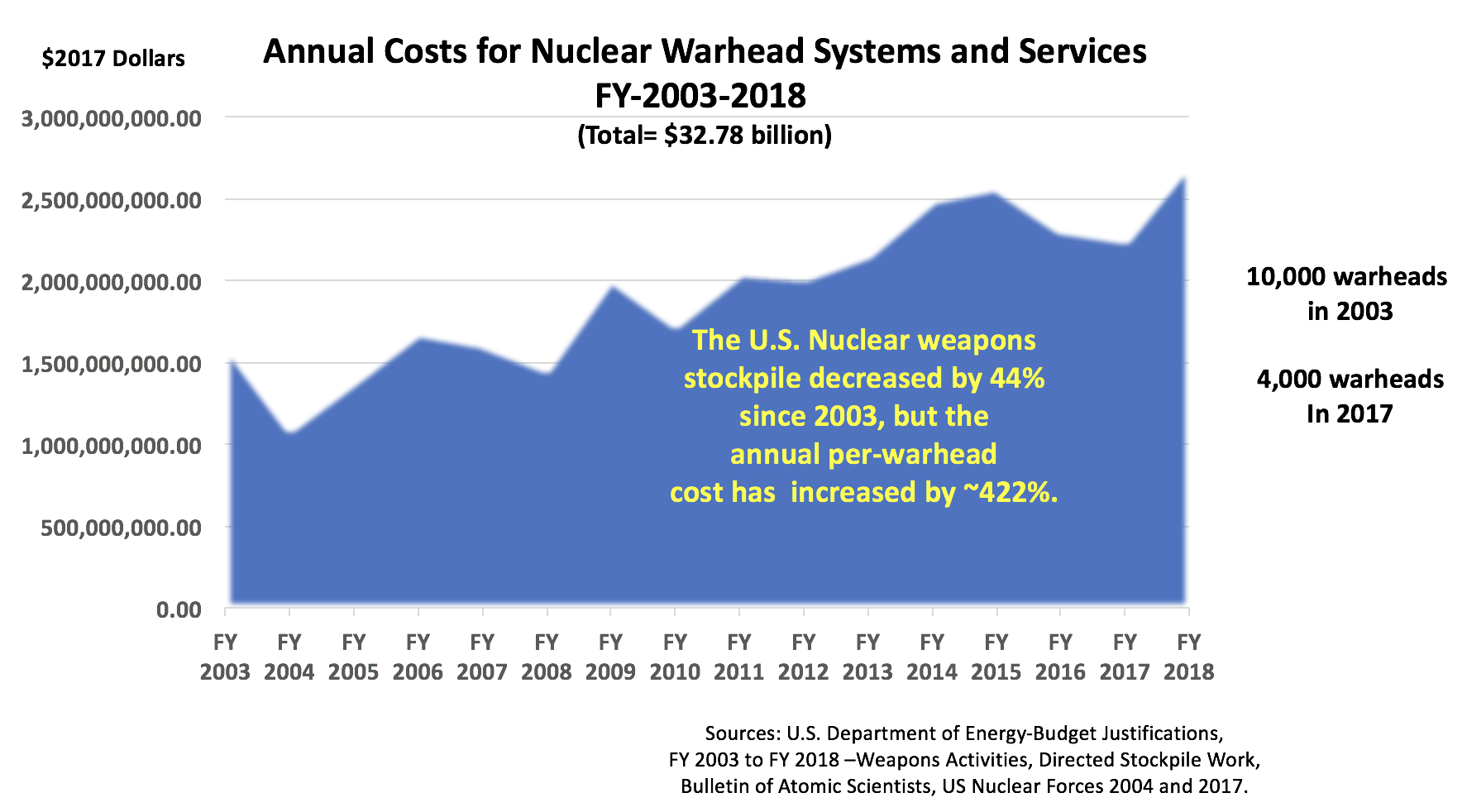Yesterday is tomorrow: estimating the full cost of a nuclear buildup
By Robert Alvarez | November 3, 2017

A recent Congressional Budget Office (CBO) estimate puts the bill for modernization of the nuclear weapons complex and arsenal at $1.2 trillion over 30 years. This new estimate—a significant increase over previous suggestions of the cost for rebuilding the US triad of land, submarine, and bomber-based nuclear forces—has drawn much comment. But the CBO estimate avoids including funds for environmental restoration and waste management of the Energy Department’s nuclear weapons complex—funding that is also in the Congressional Atomic Defense Activities Account that supports the department’s nuclear weapons activities. If these legacy costs are included, then the total price tag goes to $1.74 trillion over three decades. (See figure 1.)
Figure 1
An analysis of the annual costs for nuclear warhead services and systems from fiscal years 2003 to 2018 (in 2017 dollars) shows that over the past 15 years, the United States has spent nearly $33 billion a year on a dwindling nuclear stockpile. Even though the U.S. Nuclear weapons stockpile has shrunk by 60 percent since 2003, the annual per-warhead cost has increased by about 422 percent. (See figure 2.)

Figure 2
These estimated costs for environmental cleanup are likely on the lower end of the eventual tab, because the Energy Department’s large infrastructure of abandoned facilities has been ignored for decades. Abandoned and antiquated structures constitute a fast-growing overhead expense for the weapons complex, which must pay for building collapses, flooding, and fires, and for preventive work that, for example, keeps roofs on vacant buildings from falling in. In 2015, the Energy Department inspector general warned that, “delays in the cleanup and disposition of contaminated excess facilities expose the department, its employees and the public to ever-increasing levels of risk [and] lead to escalating disposition costs.”
For instance, the Y-12 nuclear weapons site Oak Ridge,Tenn., has abandoned contaminated structures, mostly built in the 1940’s, that inhabit a footprint 2.5 times larger than the Pentagon building. In December 2016, the cost to get rid of 2,349 Energy Department abandoned facilities over the next 10 years was roughly estimated at $32 billion.The Energy Department reports that among those buildings are 203 unattended “high risk” facilities, estimated to cost $11.6 billion to deal with. And sometimes the risk becomes reality, the most recent example being the collapse of the PUREX Tunnel at the Hanford Site in Washington State; the tunnel holds an enormous amount of radioactive waste, and its collapse forced workers to seek cover at the Hanford site. The Energy Department estimates that another 1,000 abandoned facilities will be added to the list of those needing cleanup over the coming decade. Disposition costs for the large amounts of hazardous wastes in the abandoned structures are not included in the department’s 2016 estimate and are likely to add several billion dollars more to the ultimate bill.
To be sure, these legacy costs are not specifically related to nuclear modernization. But so long as the United States continues to support and, perhaps, rebuild a large nuclear weapons complex, the costs of the complex as a whole will continue—and continue to increase. Decisions on modernization need to take these legacy costs into account because they will inevitably affect the amount of money available to the US defense effort, and, very importantly, to the protection of the health and safety of workers in the weapons complex, and the American public.
Together, we make the world safer.
The Bulletin elevates expert voices above the noise. But as an independent nonprofit organization, our operations depend on the support of readers like you. Help us continue to deliver quality journalism that holds leaders accountable. Your support of our work at any level is important. In return, we promise our coverage will be understandable, influential, vigilant, solution-oriented, and fair-minded. Together we can make a difference.
Topics: Columnists, Nuclear Weapons















